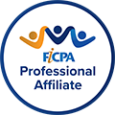EXECUTIVE SUMMARY:
The CARES ACT passed by the U.S. Congress on Friday, March 27, 2020 and signed into law by President Donald J. Trump on the same day is a massive coronavirus relief bill that in part provides tremendous relief for small businesses currently in flux. Businesses and nonprofit organizations may be eligible for an unsecured loan of up to $10 million, backed by the FDIC, to cover necessary business expenses due to the effects of the Coronavirus pandemic at a maximum rate of 4%. The portions of the loan used to cover allowable business expenses during the 8 weeks after origination of the loan will be forgiven, essentially converting that portion of the loan to a grant. Eligible banks and lending institutions are ramping up to deal with the volume of requests expected for this loan from small businesses. Keep in mind that the Small Business Administration disbursed twenty billion dollars in all of 2019 and will now attempt to disburse more than three hundred billion in just a matter of weeks under this program.
Section 1102: Paycheck Protection Program (“PPP”)
Eligibility:
Any businesses and private or public nonprofit organizations with less than 500 employees from February 15, 2020 to June 30, 2020 are eligible for the loan. Certain industries will have their size standards determined by the Small Business Administration (SBA).
Exceptions:
Any businesses and private or public nonprofit organizations with less than 500 employees from February 15, 2020 to June 30, 2020 are eligible for the loan. Certain industries will have their size standards determined by the Small Business Administration (SBA).
- Businesses with more than 500 employees which have multiple locations, and each location has less than 500 employees, may be eligible if their industry NAICS code begins with 72.
- Businesses which received a 7(b)(2) loan, after January 31, 2020 for the same purpose of covering the Allowable Uses (defined below) cannot also receive this loan. If a business received a 7(b)(2) loan for other purposes, they may still be eligible for this loan.
Sole Proprietorships, Self-Employed, and Independent Contractors
Everyone operating as a sole proprietorship, self-employed, or independent contractor shall be eligible for the loan. They must submit documentation of payroll reported to IRS, 1099-MISC, or income and expenses. Sole proprietors, self-employed individuals, and independent contractors who receive income, wage, commission, or net earnings of more than $100,000 are not eligible.
Franchises
A business operating a franchise that is assigned a franchise identifier code by the SBA is also eligible under the new law, whereas under other SBA loans franchises are subject to affiliation limitations under the SBA.
Amount of Loan
The maximum amount a business is eligible for is calculated as the lesser of:
- Monthly average payroll (see Payroll under Allowable Uses); calculated as the total monthly average from one year prior to which the loan was made; multiplied
- By 2.5x; plus
- The outstanding amount of an Economic Injury Disaster Loan originated between January 31, 2020 and March 27, 2020.
OR - If the business is a seasonal employer, the monthly average payroll for 12-week period beginning February 15, 2019, or, at the election of the borrower, beginning March 1, 2019; multiplied
- By 2.5x; plus
- The outstanding amount of an Economic Injury Disaster Loan originated between January 31, 2020 and March 27, 2020.
OR - $10 million.
Borrower Requirements
The borrower must make a good faith certification that the uncertainty of current economic conditions makes necessary the loan to support ongoing operations; that the funds will be used to retain workers, maintain payroll, and make mortgage, lease, and utility payments; that borrower does not have an application pending for a 7(a) loan for the same purposes; and that borrower, from February 15, 2020 to December 31, 2020, has not received amounts under a 7(a) loan for the same purposes.
Payment Deferment
The Act requires lenders to provide borrowers with complete payment deferment relief, including principal, interest, and fees, for a period of not less than 6 months and not more than one year. If a loan is purchased on the secondary market, and the investor declines to provide the deferment requested by the borrower, the Administration shall exercise its right to purchase the loan and provide the borrower with the proper deferment period. Within 30 days of the passage of the Act, March 27, 2020, the SBA will release guidance to lenders on the deferment.
Terms
- The maximum interest rate is 4%
- The maximum term of the loan is 10 years from the date on which the borrower applies for loan forgiveness under §1106.
- The loan does not require collateral.
- The loan does not require a personal guarantee.
- The Act waives all borrower and lender fees.
- There is no prepayment penalty on the loan.
- After the loan amount is reduced for forgiveness as provided in §1106, the remainder of the loan shall continue to be guaranteed by the Administration.
- Typically, with an SBA loan, small businesses are not allowed to obtain credit elsewhere. However, under §1102, that provision does not apply.
Allowable Uses
The loan is provided for the purpose of covering necessary expenses. Accordingly, there are specific allowable uses for the loan:
- Payroll: salary; wage; commission; payment of cash tip; payment for parental, vacation, family, medical or sick leave; allowance for dismissal or separation; payment required for provisions of group healthcare including insurance premiums; payment of retirement benefits; and payment of State or Local employment taxes.
- DOES NOT INCLUDE:
- Compensation of an individual employee of more than $100,000 in one year, prorated for the covered period.
- Payment of Federal employment taxes.
- Compensation of an employee whose principal place of residence is outside of the United States.
- Payment of qualified sick or family leave for which a credit is allowed under 7001 and 7003 of the Families First Coronavirus Response Act.
- Payment of interest on any mortgage obligations (no prepayment and no payment of principal).
- Rent.
- Utilities.
- Interest on debt obligation incurred before February 15, 2020.
- Refinancing of an Economic Injury Disaster Loan obtained between January 31, 2020 and March 27, 2020.
Section 1106: Loan Forgiveness
Amount of Forgiveness
Parts of the loan can essentially be converted to grants. The amount of the loan that businesses use for payroll costs (see Payroll under Allowable Uses), interest payment on mortgage obligation (incurred before February 15, 2020), payment on rent obligation (incurred before February 15, 2020), and utility payments (for which service began before February 15, 2020) in the first 8 weeks after origination of the loan will be completely forgiven. The amount forgiven may be up to the entire amount of the loan.
Reduction in Workforce
If a business reduces its workforce during the 8 weeks after origination of the loan, the amount that will be forgiven will be reduced proportionately. If a business has an average of 300 employees during the eight weeks, but last year during the same 8 weeks had 400 employees, the amount forgiven will be reduced by 25%. The borrower may elect to calculate based averages from January 1, 2020 through February 29, 2020 instead of the previous year.
Reduction in Salary
If a business reduces an employee’s salary or wage by 25% when compared to the quarter before the loan was originated, the amount forgiven will be reduced by that amount. This provision does not include employees who, during any pay period in 2019, received a wage or salary that annually would be more than $100,000.
Eliminating the Reduction
If an employer, before June 30, 2020, has eliminated the reduction in employees or amount of salaries, the forgiveness shall be calculated without regard to the reductions mentioned above.
Tipped Employees
Employers may receive forgiveness for additional wages paid to tipped workers.
Applying for Forgiveness
A borrower applying for forgiveness must provide the lender with documentation of IRS payroll tax filings, state income filings, state payroll filings, state unemployment insurance filings, payment of interest on mortgage obligation, payment of rents, payment of utilities. Further the borrower must provide certification by a representative of the borrower that the documentation is true and correct and that the amount requested to be forgiven was used for payroll, interest on mortgage payments, rent payments, and utilities payments. The lender must issue a decision on the application for forgiveness within 60 days.
Income Tax
Any amount forgiven under Sec. 1106 shall be excluded from gross income.
Guidance
Within 30 days of the passage of this Act, March 27, 2020, the SBA shall release guidance and regulations implementing these forgiveness provisions.
For additional guidance on the CARES Act or to find out how your business can apply for a loan under the Act, please contact us at EPGD Business Law so we can ensure your business obtains all of the available benefits.







4 Responses
I am a 20% owner of my business. One of my partners is an Australian citizen. It appears from language in the Payroll Protection loan application, that because one of the owners is not a US citizen, the loan would not be approved. ( Question 7) Is that correct? I am a managing owner with 3 US based employees.
Holly, we will message you privately and we can set up a consultation.
How can a non-profit apply? our non-profit is a church.
Marilyn, let’s set up a consultation and we can discuss your options. What is your availability?